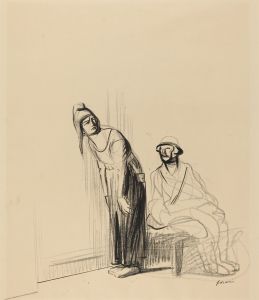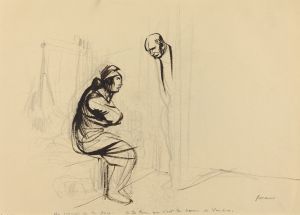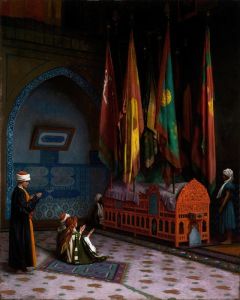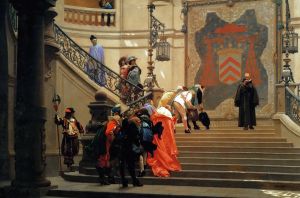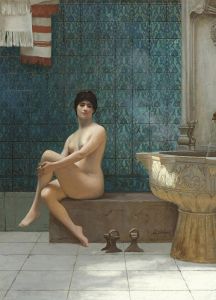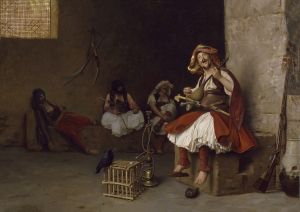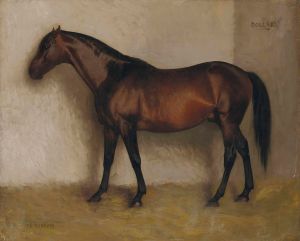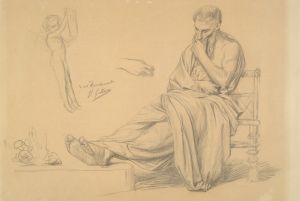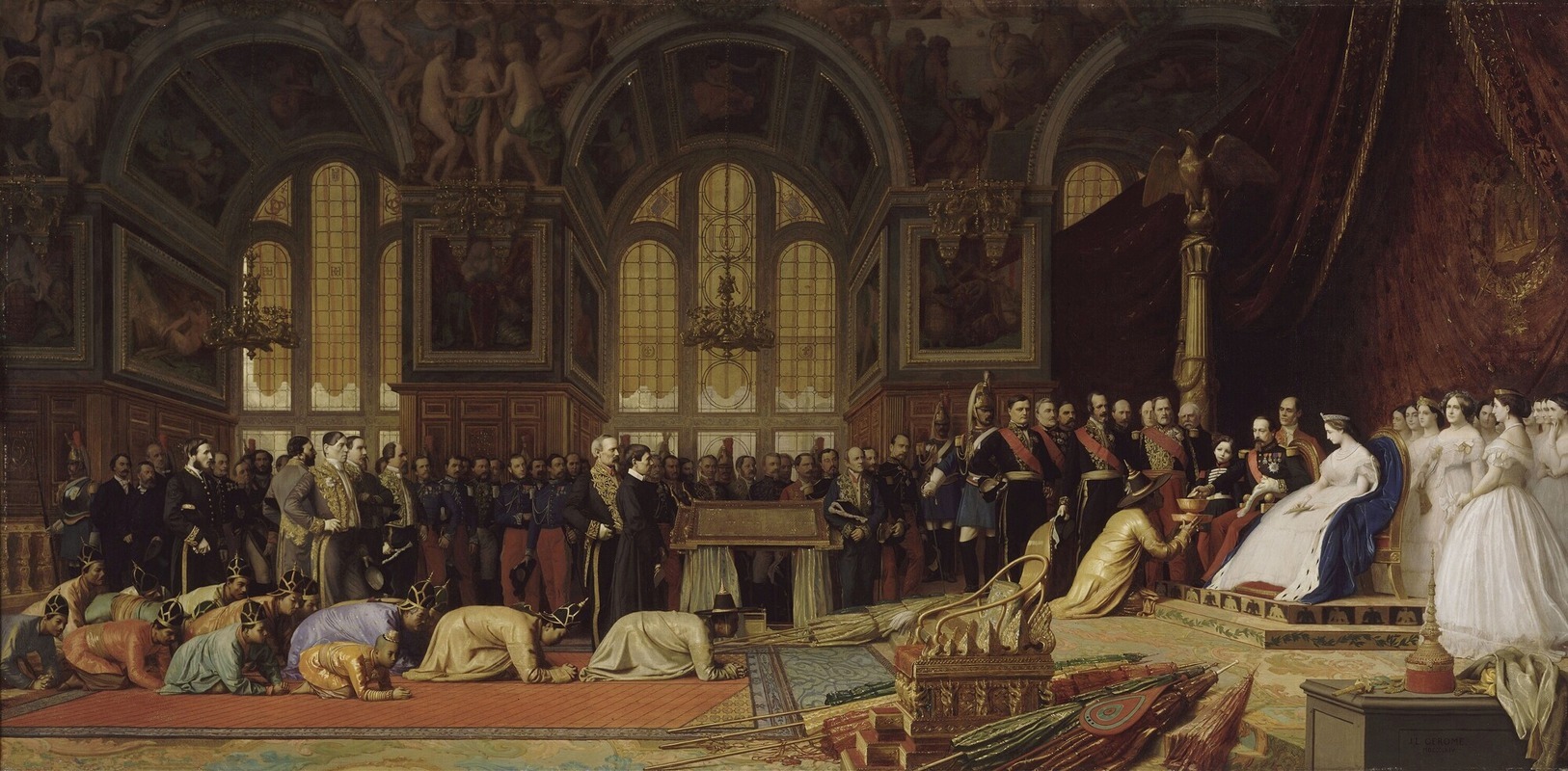
Reception of the Siamese ambassadors by the Emperor Napoleon III at the Palace of Fontainebleau, June 27, 1861
A hand-painted replica of Jean-Léon Gérôme’s masterpiece Reception of the Siamese ambassadors by the Emperor Napoleon III at the Palace of Fontainebleau, June 27, 1861, meticulously crafted by professional artists to capture the true essence of the original. Each piece is created with museum-quality canvas and rare mineral pigments, carefully painted by experienced artists with delicate brushstrokes and rich, layered colors to perfectly recreate the texture of the original artwork. Unlike machine-printed reproductions, this hand-painted version brings the painting to life, infused with the artist’s emotions and skill in every stroke. Whether for personal collection or home decoration, it instantly elevates the artistic atmosphere of any space.
"Reception of the Siamese Ambassadors by the Emperor Napoleon III at the Palace of Fontainebleau, June 27, 1861" is a painting by the French academic artist Jean-Léon Gérôme. The artwork depicts a significant diplomatic event during the reign of Napoleon III, when a delegation of ambassadors from the Kingdom of Siam (modern-day Thailand) was received at the Palace of Fontainebleau. This meeting symbolized the growing diplomatic and cultural exchanges between France and Siam in the mid-19th century.
The painting captures the moment when the Siamese envoys, dressed in traditional attire, present themselves before Emperor Napoleon III and Empress Eugénie. The scene is set in the opulent interior of the Palace of Fontainebleau, emphasizing the grandeur of the French imperial court. Gérôme's attention to detail is evident in the intricate rendering of the ambassadors' costumes, the ornate surroundings, and the ceremonial atmosphere of the event.
This diplomatic mission was part of King Mongkut's efforts to establish and strengthen relations with Western powers, including France. The Siamese delegation brought gifts and letters from the king, expressing goodwill and seeking to maintain Siam's sovereignty amidst the colonial expansion of European powers in Southeast Asia. The reception at Fontainebleau was a highly formal occasion, reflecting the protocols and customs of 19th-century diplomacy.
Jean-Léon Gérôme, known for his precise and realistic style, was a prominent figure in the academic art tradition of the time. His works often depicted historical, mythological, and Orientalist themes. In this painting, Gérôme combines his interest in historical accuracy with his skill in portraying exotic subjects, a hallmark of his Orientalist works. The painting serves as both a historical record of the event and an example of Gérôme's artistic mastery.
The artwork is notable for its cultural and historical significance, as it illustrates a moment of cross-cultural interaction and mutual respect between France and Siam. It also reflects the broader context of 19th-century international relations, where art and diplomacy often intersected. Today, the painting is recognized as an important representation of Gérôme's oeuvre and a visual document of a key moment in Franco-Siamese relations.







